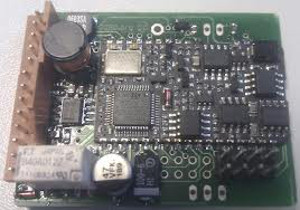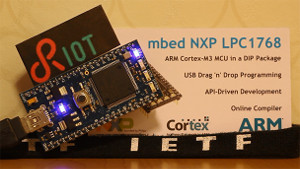Let’s take a brief look at the FreeRTOS operating system, and the FreeRTOS+Nabto platform. It’s the market-leading, real-time operating system (RTOS) for embedded systems that is not only open-source, high quality and well supported – but also provides strong cross-platform support across 33 different architectures, access to high-quality training and information, pre-configured example projects and a growing user community.
Furthermore FreeRTOS is available in a high-reliability TUV-approved version for demanding, safety-critical applications – providing peace of mind to commercial users, with strict configuration management to ensure high quality development of the FreeRTOS project’s code, and FreeRTOS is free to embed in commercial products without any requirement to expose your proprietary source code.
By combining the FreeRTOS real-time operating system with the patented Nabto peer-to-peer remote access communication platform for embedded systems, you can harness a simple and secure HTML5 or native application interface for your end users, along with an adaptive and flexible data-acquisition interface for data collection, central analysis and monitoring systems.
The resulting combined system brings simplicity, platform independence, inclusive cloud hosting services and entry level access to Nabto’s Internet-of-Things solution together into an interesting easy yet powerful real-time platform for use with embedded Internet-of-Things systems.
FreeRTOS+Nabto is a small piece of C code that, when integrated into an embedded networked device, allows that device to be remotely accessed and controlled through a rich web-based or native iOS or Android app-based interface or intelligent data acquisition system – consuming less than 23 Kb of flash in a typical system including both the FreeRTOS kernel and the IP stack.
Each device has a unique URL, allowing the device to be automatically located across the Internet, and the Nabto technology allows secure, authenticated and bandwidth-efficient peer-to-peer connections to be established even when the device is deployed behind a NAT firewall which removes the complexity of configuring firewall penetration for embedded Internet-of-Things devices in enterprise environments.
FreeRTOS+Nabto enabled devices can also be accessed over the local network in the absence of Internet connectivity. As FreeRTOS+Nabto is a new, simple, cross-platform and fully integrated solution for the Internet of Things, it provides a cloud infrastructure that enables IoT devices to be accessed through a rich user interface running in a web browser or a smartphone app – requiring the device itself to only supply the live sensor data and no other components of the interface, supplying this data via UDP in a lightweight way.

This means that the embedded devices themselves can be kept simple, power-efficient and lightweight – the use of cloud technologies means small FreeRTOS+Nabto devices can be given rich user interfaces without the need for any on-board filesystem or a TCP/IP stack, only relatively lightweight UDP/IP networking support.
These rich user interfaces can be accessed locally via the LAN or anywhere in the world via the Internet, from a computer, tablet or smartphone, with local device discovery and unique and resolvable URLs for each FreeRTOS+Nabto device provided over the chosen domain (LAN or Internet), solving the traditionally difficult problem of naming and uniquely identifying devices in large Internet-of-Things networks.
Using FreeRTOS+Nabto you can connect to a remote IoT device wherever that device is at the time of the connection simply by knowing the device’s unique URL, and being securely authenticated as a legitimate user, with the system handling all the networking, routing and encryption necessary to securely network your IoT devices, address and find them – across the LAN or across the Internet.
All you need to do as an application developer is compile the source code, write a single interface function, and make use of the FreeRTOS+Nabto fully managed cloud service. Instructions and tutorials are provided to make this easy for you, with a strong community of users and the availability of professional support for commercial customers.
Different web content can be served to different geographic regions, moving the burden of internationalisation from the embedded device into the cloud, allowing for even smaller code size and simpler more maintainable designs. All the network routing and protocol details are encapsulated within the FreeRTOS+Nabto product and its inclusive cloud hosting service, enabling FreeRTOS+Nabto to interface with the user’s application source code through a single C function, and enabling FreeRTOS+Nabto to be accessible to users and developers without an advanced level of existing networking expertise.
The FreeRTOS+Nabto platform includes a fully documented live online example that is running on a small real-world microcontroller and a separate project that uses the FreeRTOS Windows simulator. The Windows simulator version creates live virtual FreeRTOS+Nabto nodes on a local network to allow FreeRTOS+Nabto to be evaluated quickly and easily and without the need to purchase any specific hardware.
Although the simulator differs from FreeRTOS running on real hardware in that it does not exhibit real-time behaviour, the ability to set up a development environment, create and experiment with FreeRTOS+Nabto Internet-of-Things applications on a local network before purchasing any specific hardware is still a very useful and attractive capability.
Thanks to the open nature of FreeRTOS, it can be used in a wide range of embedded hardware and become part of your new or existing IoT products. As experts not only embedded hardware but also full idea-to-delivery of products, our consultants and engineers can work with you to meet your goals.
The first step is to join us for an obligation-free and confidential discussion about your ideas and how we can help bring them to life – click here to contact us, or telephone 1800 810 124.
LX is an award-winning electronics design company based in Sydney, Australia. LX services include full turnkey design, electronics, hardware, software and firmware design. LX specialises in embedded systems and wireless technologies design.
Published by LX Pty Ltd for itself and the LX Group of companies, including LX Design House, LX Solutions and LX Consulting, LX Innovations.

